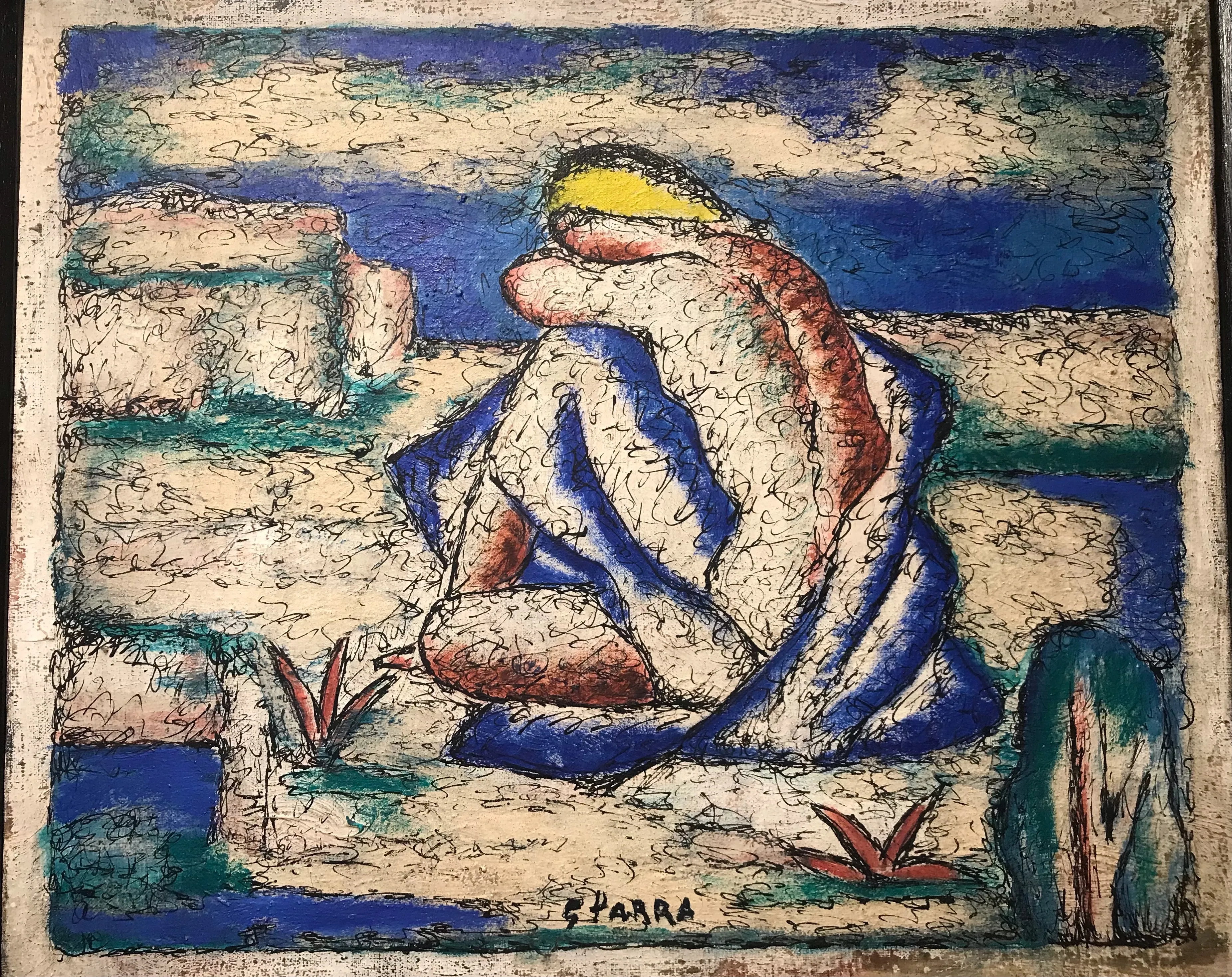Ginés Parra (Zurgena, Almería, January 24, 1896 - Paris, April 19, 1960), whose real name was José Antonio Ramón Parra Menchón, was a Spanish painter.
His family emigrated to Tlemcen, in Algeria, in 1901. There he spent his childhood and puberty and worked with his father as a miner.
After several trips through Argentina and other South American countries, made between 1910 and 1916, he moved to the United States.
Around 1920 he settled in Paris, in a studio in the Montparnasse neighborhood, to continue his training at the École Nationale Supérieure des Beaux-Arts.
However, soon after, during the golden years of art in the city, he was already dealing with other painters such as Pablo Picasso, Julio González or Manuel Ángeles Ortiz, and participated with them in various exhibitions, such as the one held by the Society of French Artists, the Autumn Salon or the Salon des Independants.
In 1927, he exhibited together with Joaquín Roca at the du Taureau gallery in Paris and, shortly after, one of his most praised works at the Salon des Independants, Leda y el cisne, was acquired by a Boston gallery.
In the 1930s and 1940s his fame established and he distinguished himself as a member of the New School of Paris.
The outbreak of the Civil War surprised him in Madrid, where he decidedly aligned himself with the Republican side, for which he was arrested.
In the following years he traveled several times to Spain and exhibited in various cities in Europe (Prague, 1946, Brussels, 1947, Stockholm, 1947, London) and America (Lima, São Paulo, Mexico City, Havana, Buenos Aires). and in the Breteau and Monatler galleries (1948).
That same year he was diagnosed with cancer and after several months of illness he died in Paris in April 1960. Shortly after, the Salón des Independientes dedicated an anthological exhibition to him and Picasso and other friends created the Society of Friends of Parra.
selected works

Mujer sentada
Oil on canvas (46x55)
